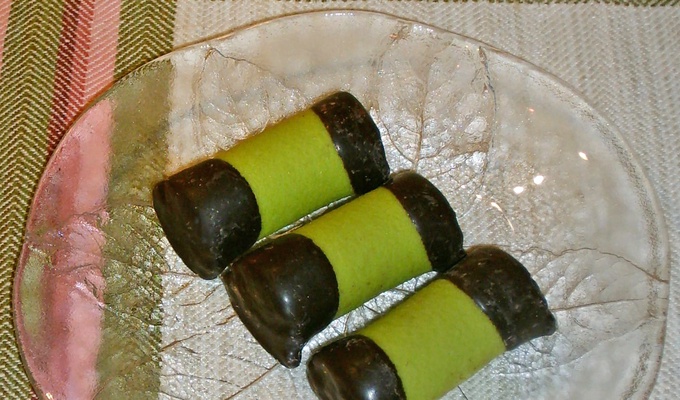Punsch (also punssi in Finnish; probably loanword from English "punch") is a type of liqueur popular in Sweden and Finland. It is most frequently called Swedish Punsch, and while historical variations have also been called Militär Punsch, Arrack Punsch, and Caloric Punsch, punsch should not be confused with the English term "punch".
It is made by the mixing of spirits (arrack, brandy or rum) with lemon, spices, sugar, and water, and was first brought to Sweden from Java in 1733. The spirit arrack is the base ingredient in most punsches, also imported into Europe by the Dutch from their colony in Batavia, Dutch East Indies. Punsch usually has 25% alcohol by volume (ABV) and 30% sugar.
While still made in Sweden by combining ingredients, since the later part of the 19th century it is frequently purchased as a bottled liqueur under various brand names. It is drunk both warmed and chilled.
Historical ways of serving
Until the 1840s, punsch was typically served warm and created just before consumption: a sugarloaf was placed upright in a large bowl, hot water was poured over it to make the sugar dissolve, and arrack, unflavoured spirits and German Rhine wine were added. Still warm, the drink was then served in cups. Punsch is also used as a flavoring agent or to increase the alcohol content for glögg, the warmed Scandinavian mulled wine frequently associated with Christmas. On Thursdays, punsch is traditionally served warm as an accompaniment to Swedish yellow pea and pork soup (ärtsoppa) and pancakes. It may also be served warm at winter festivals and at student sittning dinners.
In 1845 the wine importing company J. Cederlunds Söner started selling premixed punsch in bottles. This was quickly followed by several other manufacturers, including in northern Germany, and the habit of also drinking punsch as a chilled liqueur began to take hold.
Apart from being drunk neat, punsch is mixed into cocktails. Among the more prevalent are the Doctor cocktail (with rum & lime), the Diki-Diki (with apple brandy & grapefruit juice), and the Guldkant (or "gold rim", made with equal parts punsch & cognac). Trader Vic's 1947 Bartender's Guide includes the Turret Cocktail and its version of the Corpse Reviver No.2 with Swedish punsch. Other alcoholic drinks include the Boomerang cocktail, Greta Garbo, Malecon, and the Modernista.
Mixed also for wine cocktails, pre-prohibition era bartender Charles Mahoney mixed equal parts Rhine wine and punsch to make a Prefeldt Highball. Punsch is also added to sparkling wine to make a punsch royale.
Used as a flavoring syrup in desserts, it is a vital ingredient in the popular Swedish chocolate praline, known as punschpralin. It is also used in the pastry called punschrulle, and is associated with the Runeberg torte. Punsch ice cream is an available flavor in Sweden.
